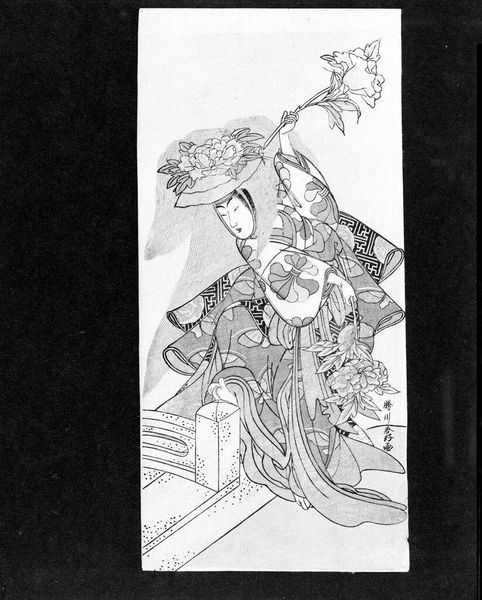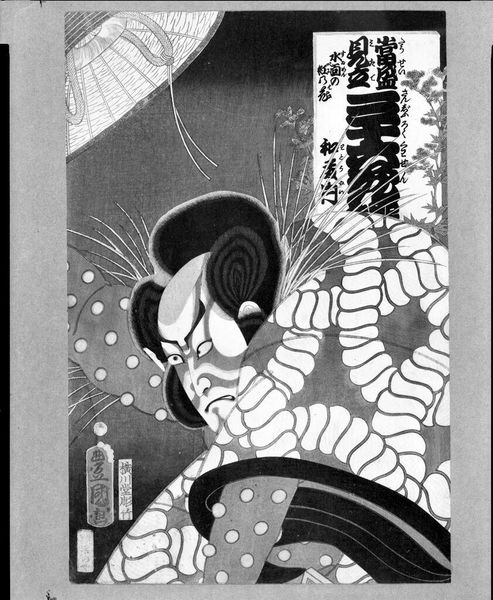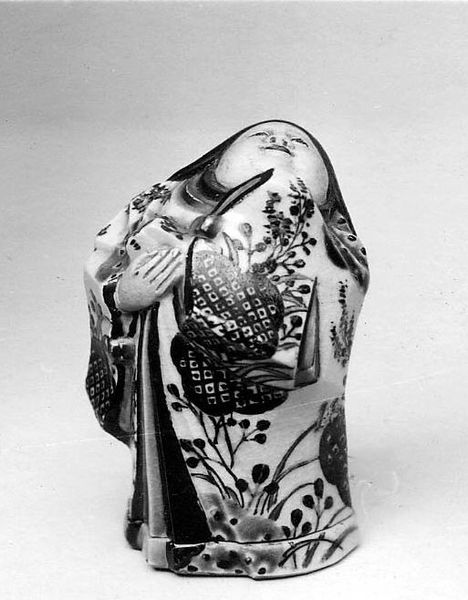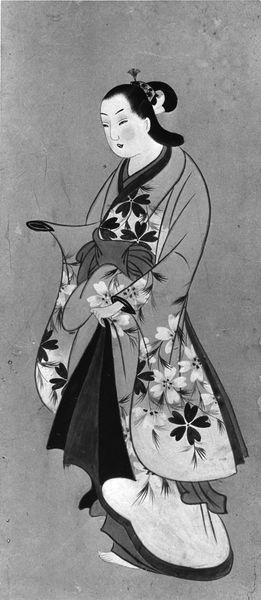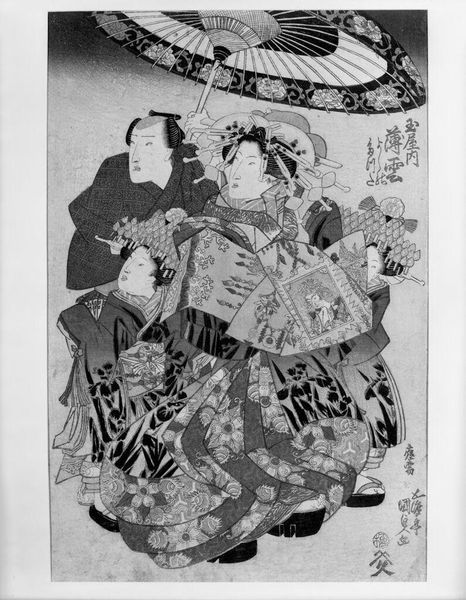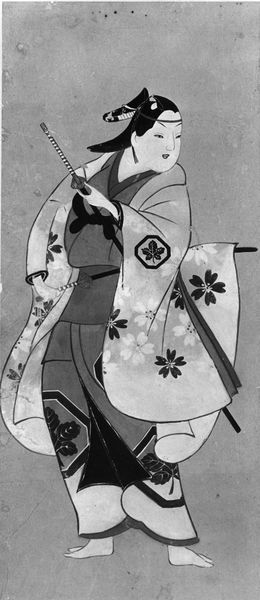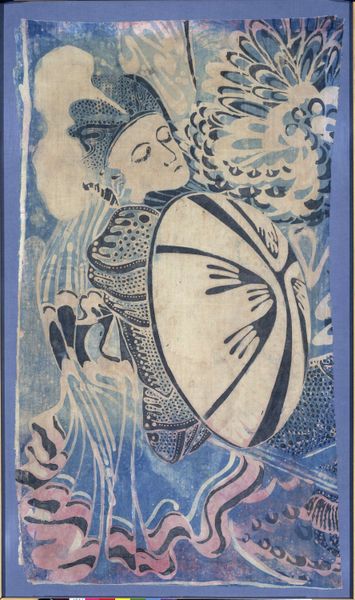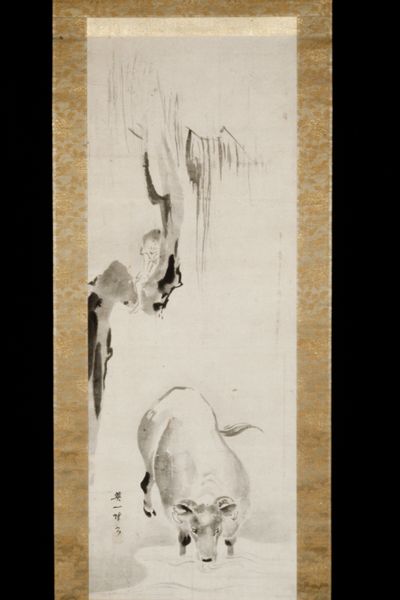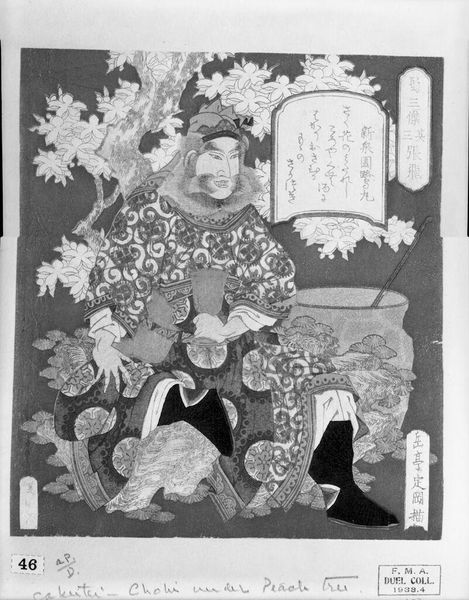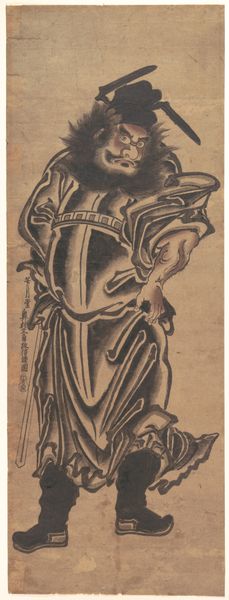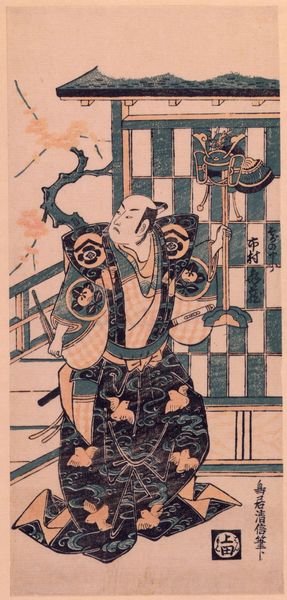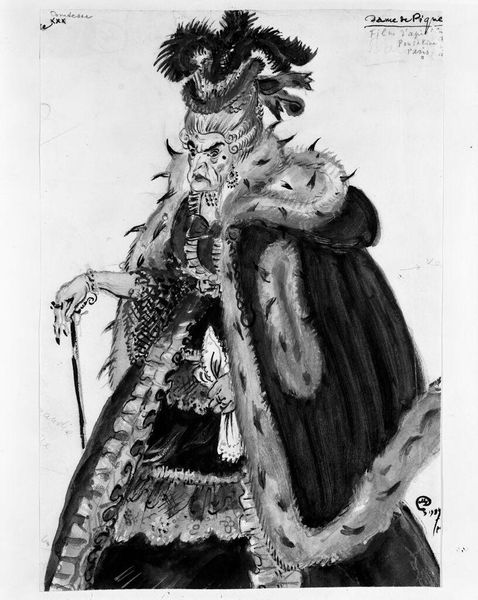
drawing, paper, ink
#
portrait
#
drawing
#
asian-art
#
ukiyo-e
#
figuration
#
paper
#
ink
#
line
Dimensions: Overall: 25 5/8 x 12 13/16 in. (65.1 x 32.5 cm) Image: 23 7/16 x 11 3/8 in. (59.5 x 28.9 cm) Mat: 29 3/8 x 17 1/4 in. (74.6 x 43.8 cm)
Copyright: Public Domain
Editor: Here we have Hishikawa Moronobu’s "Standing Beauty," made with ink on paper, sometime between 1618 and 1694. The figure is mostly depicted through contour lines and looks down with a solemn air. I'm curious – what compositional elements stand out to you most? Curator: Note the carefully constructed silhouette. The artist has masterfully utilized the black ink to delineate the figure against the background. How does the density and modulation of the ink contribute to your reading of the figure's form? Editor: I see it! The varying thickness makes her robes seem so voluminous. Curator: Indeed. Consider also the treatment of space. While the figure is rendered with remarkable detail, the background remains relatively blank. This pushes the figure forward in the composition. Editor: So the negative space directs our focus? Also, those dragons on her robe, how would you describe the drawing technique used for them? Curator: Precisely! The linear precision contrasts well with the shading of her dress, no? Look closely at how line weight and rhythmic curves generate movement and a rich material quality. Her head is slightly tilted, breaking the verticality, adding to the work’s aesthetic value. Editor: It’s interesting how much we can learn about form and technique simply by observing lines and shapes. I appreciate this more structural way of looking at art. Curator: Indeed! It's in decoding the language of form that we access a deeper understanding of the artist’s intention.
Comments
No comments
Be the first to comment and join the conversation on the ultimate creative platform.
